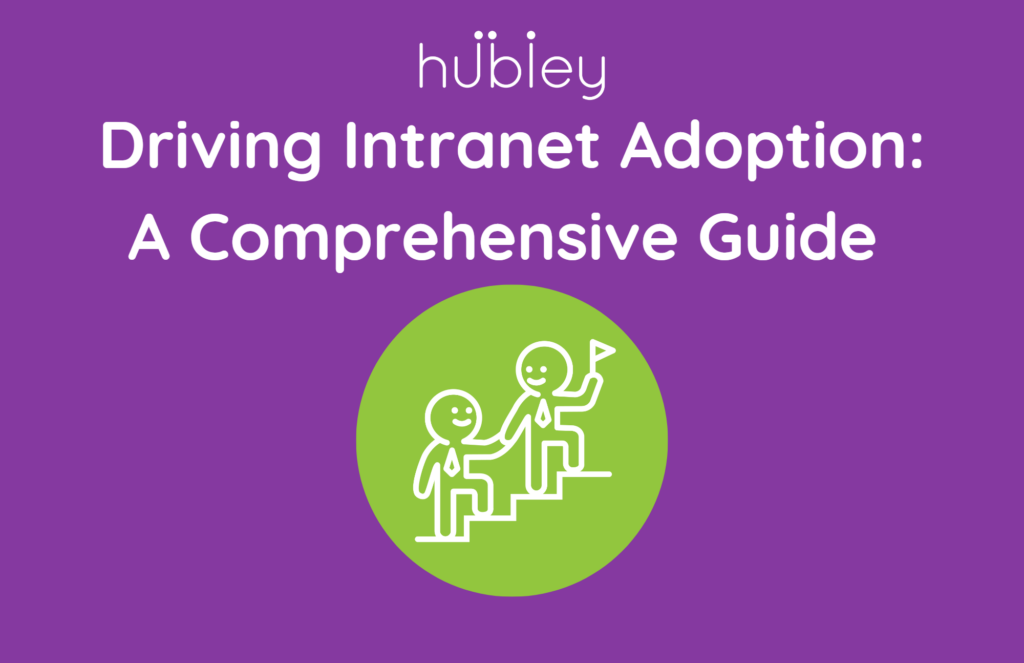An intranet offers endless opportunities to improve and streamline your business operations. With a secure, central location in place, you can provide your employees with the resources they need to perform their roles, train for new ones, and form a community.
Nevertheless, life always throws curveballs, and some employees might treat the introduction of an intranet — a new, unwanted process that changes how they do their work — as one of those curveballs. Their reluctance effectively puts the ball back in your court. Being a leader in your company and a primary supporter of your new intranet means your role involves more than just technical expertise.
Driving intranet adoption through promotion and engagement has the same value as proper testing and support. Remember, the technical element can’t succeed without a human touch.
Since intranet user adoption plays a vital role in its return on investment, an early intranet adoption strategy should come together along with its initial design. By keeping your employees in mind during the design phase, you can build a system with your intranet adoption strategy and your business needs both at the forefront.
The Hurdles of Successful Intranet Adoption
Without a proper intranet adoption strategy, driving intranet adoption will involve several significant obstacles. The biggest obstacles to such a technical system are often derived from human needs and mistakes, such as the following:
Employees Who Don’t Engage with the Intranet
Generally speaking, user engagement drops if employees can’t figure out how to use a new asset or would rather not use it at all. Likewise, if employees have no incentive to use the business’s intranet, then its pages will have the same problem as neglected websites: With no established userbase, there’s no need to maintain them.
Poor User Experience
Consumers want the most efficient and effortless experience possible when finding and using the information they need and using it. With that being said, remember that your employees are consumers, too. If they can’t find the information they need immediately or otherwise struggle to navigate the system, then even the best intranet adoption strategy won’t save things.
Irrelevant Content
Even if your focused employees can find the information they need, they simply want to do their job and move on. Useless information that clogs your intranet with content that employees need to ignore — or take steps to avoid — will do nothing. In short, you must ensure that your employees can find the relevant content they need.
No Adaptation over Time
Alongside your intranet adoption strategy, you must ensure an intranet adaptation strategy. They may sound alike, and driving intranet adoption on its own is all good. Still, without the ability to adapt to changing business demands, a static intranet will, in time, become a drain on resources rather than a benefit.
A Lack of Useful Features
Employees will also avoid your business’s new intranet if it doesn’t contain features that are relevant to their roles. Employees want content that is applicable to their job processes and’ll continue to use alternatives until the intranet provides it.
Why Adoption Is Crucial to Get the Max out of Your Intranet
Without employees as users, it’ll end up a ghost town. The few supporters and tech sponsors will shout into the digital void while everyone else scrolls by. You can avoid this catastrophe with a smooth intranet adoption plan.
3 Main Phases of Adoption
An adoption plan consists of three parts: pre-live planning and design, the big launch day, and continual improvements.
- Pre-Live Intranet Planning: Identify the employees who are most likely to champion your new system in its early stages. You can use a dedicated team, a group of planners, or members of management across all levels. Provide them with the information and skills they need to spread the word.
- Intranet Launch Day: With careful planning and a proper introduction to the rest of your intranet, you can build excitement for its launch. Early polls and other early information-gathering tactics can provide valuable information about your system and how it can improve. First impressions matter, so pre-launch testing is also vital. Your employees need to see a new system they can trust to consistently and efficiently provide the resources and connections they need. Slowdowns and crashes right out of the gate can kill your intranet user adoption numbers before they ever get off the ground.
- Intranet Upgrades and Iteration : Never remain static. In addition to adjusting to fit new business developments, always work to match your employees’ expectations and needs. Improvements to efficiency and content — which include new content creation whenever necessary — go a long way.
How to Get People to Use Your Intranet
An intranet is only as good as its users, so you must do everything possible to get your employees into it and get them talking.
Prepare Specific Use Cases
Some employees may have never used an intranet before, so when you first present the concept, come prepared with materials designed to educate them on the benefits, such as:
- Resources
- Employee-exclusive social media
- Education materials
- Efficient access to internal systems
A team aware of the benefits of their new intranet is more likely to use it.
Create a Simple Intranet Experience
Simplicity makes all the difference. To that end, proper data management, content organization, and simple-to-find materials give employees easy access to the tools they need to succeed. Easy access also means easy adjustments, which are vital in the first few weeks. If your intranet feels complicated or clunky, your employees will shy away.
How to Maintain Intranet Usage for Maximum Efficiency
Driving intranet adoption can feel like an uphill battle, but instead of ripping off the bandage, consider a more methodical approach that makes your employees feel cared about and heard.
Adopt Your Intranet in Stages
Launch day should be a day of celebration and excitement, and it doesn’t have to be a day where you throw your employees in the deep end, either. Roll out a few key features at a time, adjust based on feedback, and implement new stages after you confirm employee satisfaction. Your intranet adoption plan should operate under a flexible timescale that believes in quality over speed.
Integrate Familiar, Existing Processes
Consider using your intranet to connect the applications already in use. Early intranet stages make for the best time to pull the disparate programs you’ve used for business, like email, CRM, CMS, and other programs — along with the resources to help use them — into one place.
Communicating the Benefits of Intranet Usage Is Key
In the days leading up to launch, make sure your team is aware of the plan, what they can use the intranet to do, and why it’ll make all the difference for them and the company.
Combine face-to-face messaging with pre-launch training and use early adopters as program ambassadors who will communicate the benefits to their peers and give them a positive first impression before the system even launches.
Listen to Feedback from Employees for Further Improvements
Regarding internal company design, your employees are your greatest asset. Help them learn the ins and outs of your new intranet, and with some luck, you can form a symbiotic relationship between the intranet and the team, in which both develop and improve as the needs of the business change.
Build Community
An intranet can foster communication between team members separated by distance, which is more important than ever in the modern world of remote work. If employees feel isolated and as though the intranet isn’t helping, reach out to them for suggestions on how they can become more interconnected.
Apply Regular Training
Ask your employees for feedback on the intranet’s design and how they use it. If they aren’t sure how to use some of the new features or can’t find the best way to maximize the intranet’s potential, there’s only one solution: teaching them. Design employee training around self-identified deficiencies in their ability to use the intranet to show your vested interest in their success.
Improve Mobile Accessibility
The more avenues you give for access, the more staff members can use the intranet. A mobile-friendly solution founded on employee perceptions and access will create a one-stop shop for corporate information, even on the go.
Assign or Create an Intranet Governance Team
A clear point of contact will give your staff a valuable resource: Someone they know they can talk to when they have thoughts about the new intranet. Instead of filling out an anonymous survey, they can reach out to a person — a peer — and receive honest feedback on their comments.
Adopting hubley for a Successful Intranet Rollout
If you aren’t sure how to drive intranet user adoption or need help driving intranet adoption, consider hubley for your intranet needs. Our expert team has the experience and resources to build a large-scale adoption plan that spans your intranet’s entire lifecycle.









